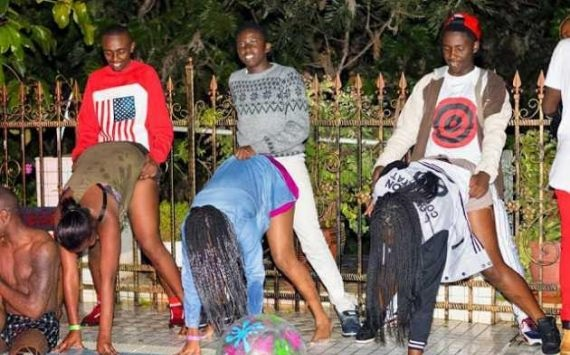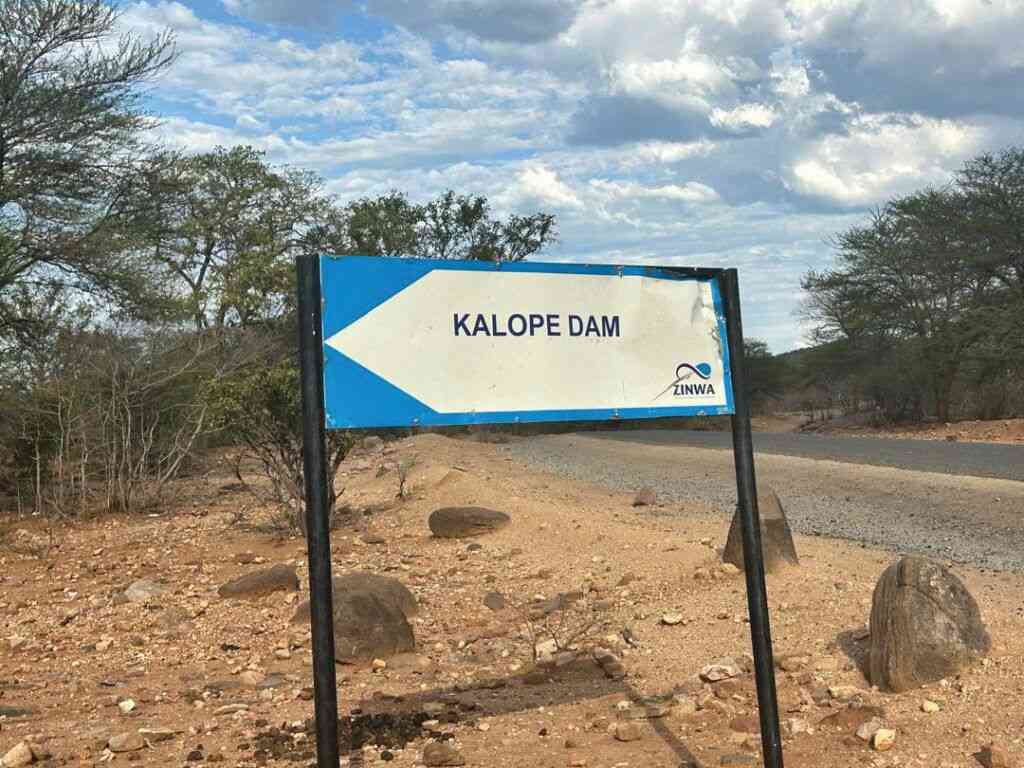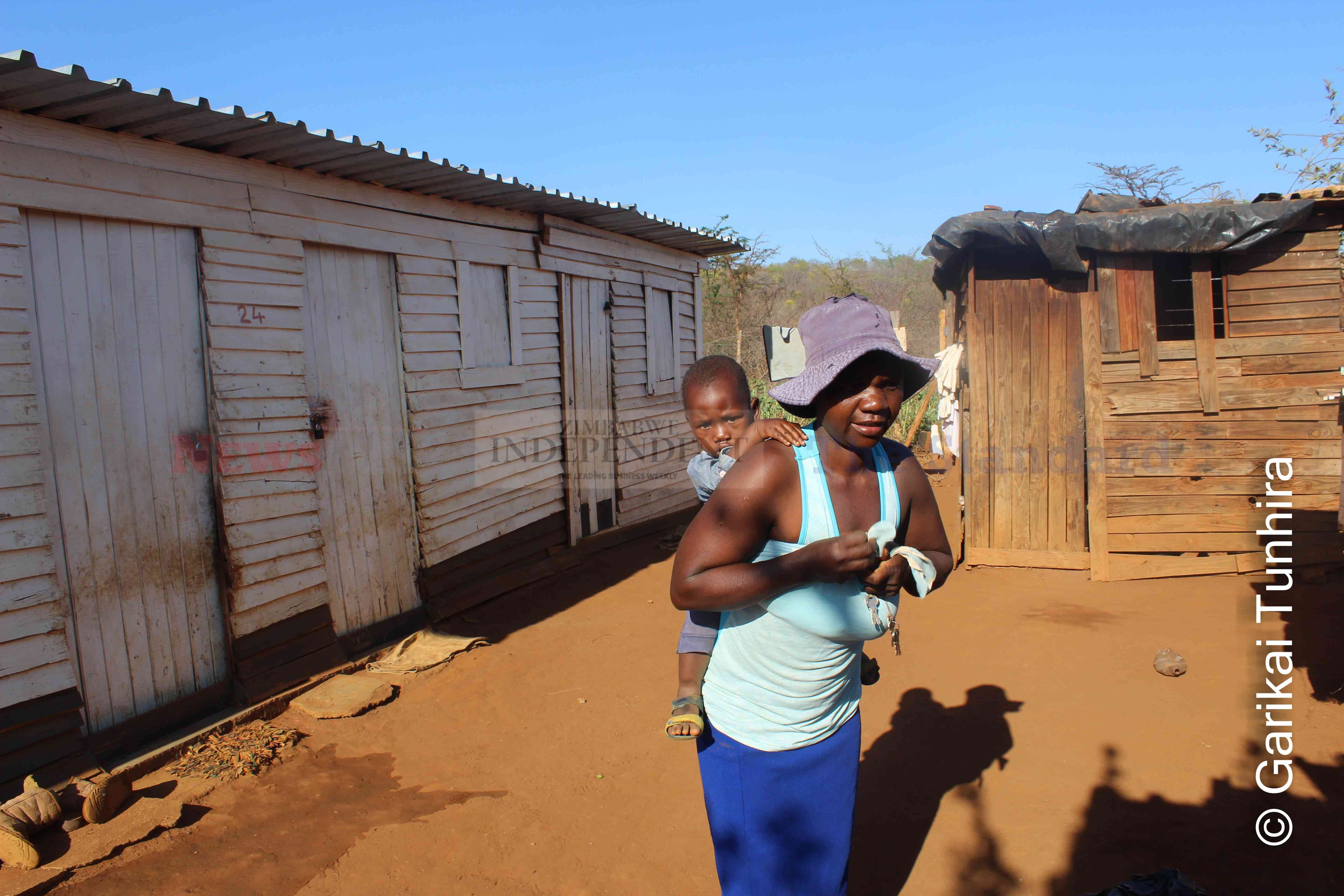
BY the time NewsDay got to his place, Johane had long left for school.
It was around 7:30am.
Sitting for his final Grade 7 examinations, one could imagine what he had eaten before setting off for the final primary school examination last Monday morning.
Johane is now a lone resident at his government-allocated cabin in Runyararo, Chimanimani West in Manicaland province, since his mother’s death last year.
Orphaned at such a tender age, worse off a victim of the March 2019 Cyclone Idai, Johane and his mother left Ngangu, one of the worst hit places during the most devastating natural event in the history of cyclones in Zimbabwe.
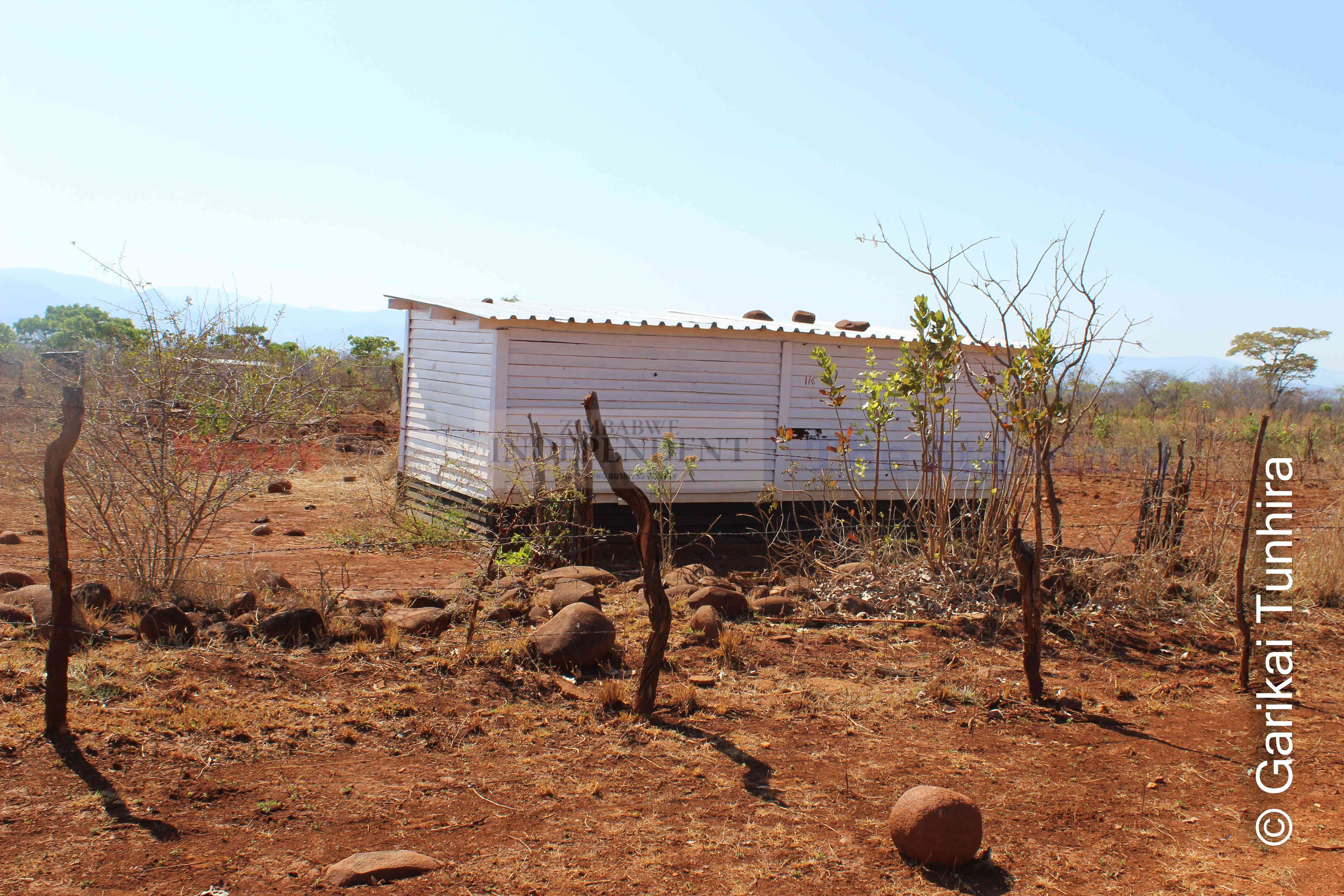
The storm affected more than 270 000 people, leaving 341 dead and many others missing.
Survivors of the tropical storm found themselves being moved to Runyararo and Johane is one of the hundreds of other families relocated from Ngangu and Rusitu areas.
“He stays alone,” a neighbour told NewsDay.
- Mufakose shines in RCZ national music competition
- AGV takes film screening to community
- Zim-British television director scoops Emmy Award
- Govt completes 166 houses for Cyclone Idai victims
Keep Reading
“His mother died last year and he has been all alone since then.
“When we find extra food, we sometimes share with him what we have.
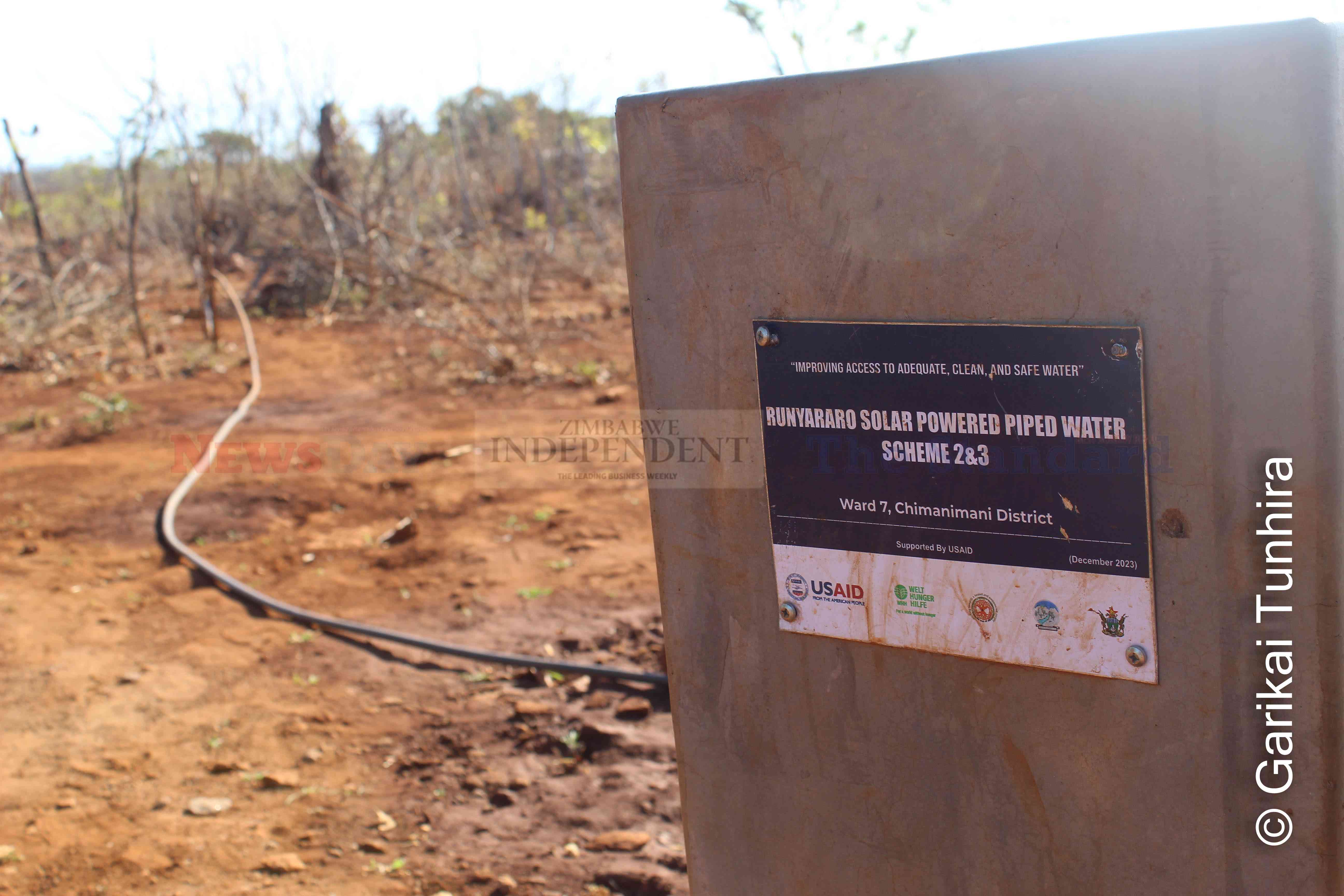
“At times he goes and stays with his friend where he finds something to eat.”
Added the neighbour: “His brothers are in Chimanimani, but they do not come to check on him. They used to come during the first few days, but do not anymore.
“Only his uncle pays him a visit here and there. Johane has no one else other than us.”
‘We’re starving here’
For Chipo Mahembe, life at Runyararo is unbearable.
The 31-year-old mother of one said she survives on menial jobs, although they don’t reward much.
“I don’t work. I survive on menial jobs. The payments are so little. You can be paid a dollar [US$1]. Other times we are asked to clear people’s yards and are given a bucket of maize meal, which we take to the grinding mill and cook sadza as life goes on,” she said on a sweltering morning.
Mahembe said she did not make it on the list of the government’s social welfare beneficiaries, but was on the Food for Asset programme, run by the Zimbabwe Council for Churches (ZCC).
Her husband was not home at the time of the visit and she said he had gone to look for menial jobs in Chimanimani town.
“We came here in 2021 (not quite sure of the exact dates), coming from Ngangu,” she said.
‘Only cabins and nothing else’
“Other than these boards [cabins], we did not get anything else from the government. We only got chicken to rear from WHH [Welthungerhilfe]. We also got broilers from IOM [International Organisation for Migration].
“We reared them quite well, but the challenge was transporting them to Chimanimani. The temperatures here are too much. I took 15 birds to Chimanimani town for sale, but by the time I got there, four were already dead.
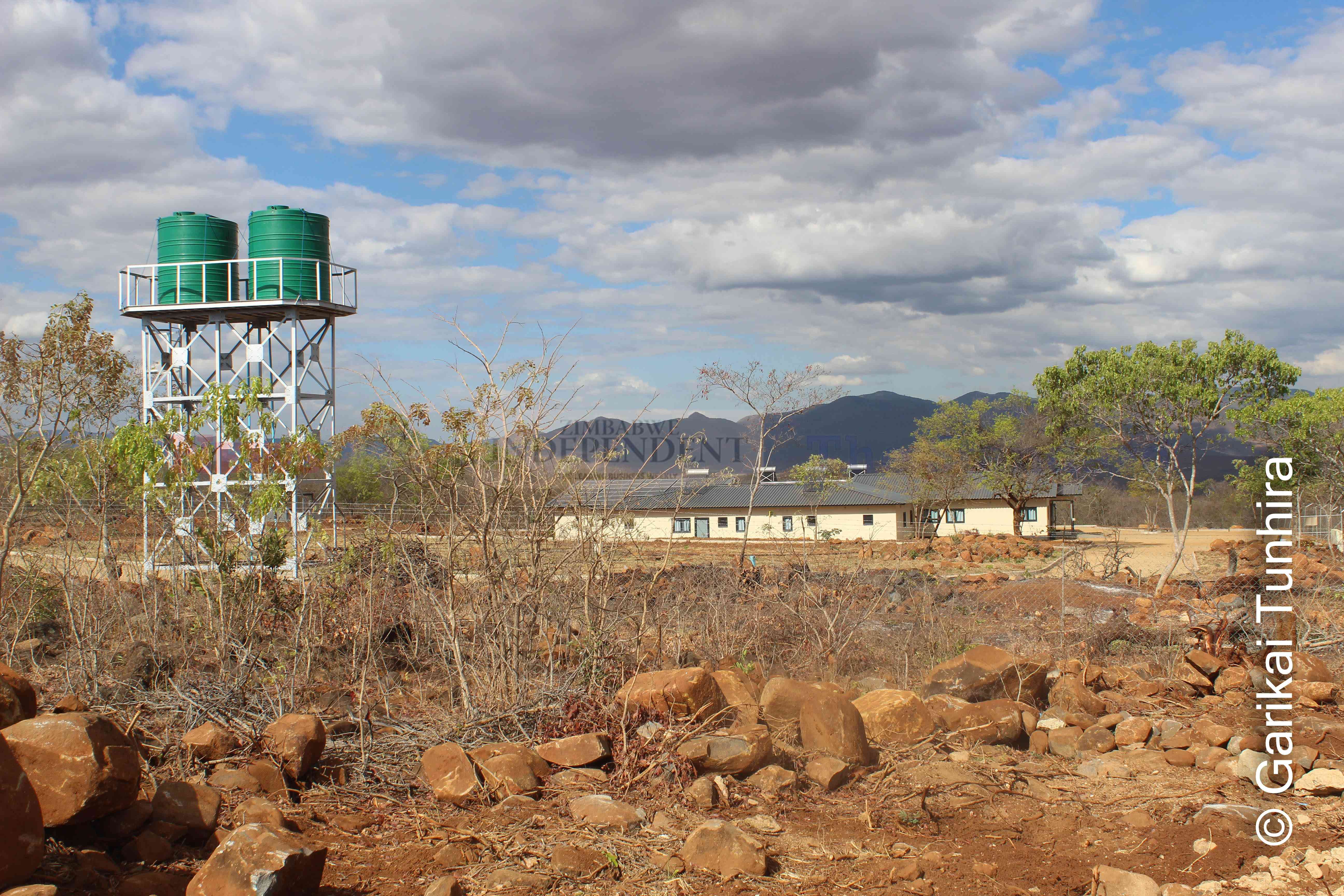
Life in cabins when it rains
Mahembe said they always dread the impending rainy season, because life in cabins during the wet season is not a pleasant exprience.
“When it rains, the cabins flood. Water enters from any direction,” she said.
“At night, we have to stand up and wait for the water to recede, then we scoop out the water before we can sleep again. At times we don’t even sleep at all.
“Snakes also come into our cabins. Rats too.”
Mahembe is not alone in this situation.
Memory Dhliwayo (37) shares similar sentiments.
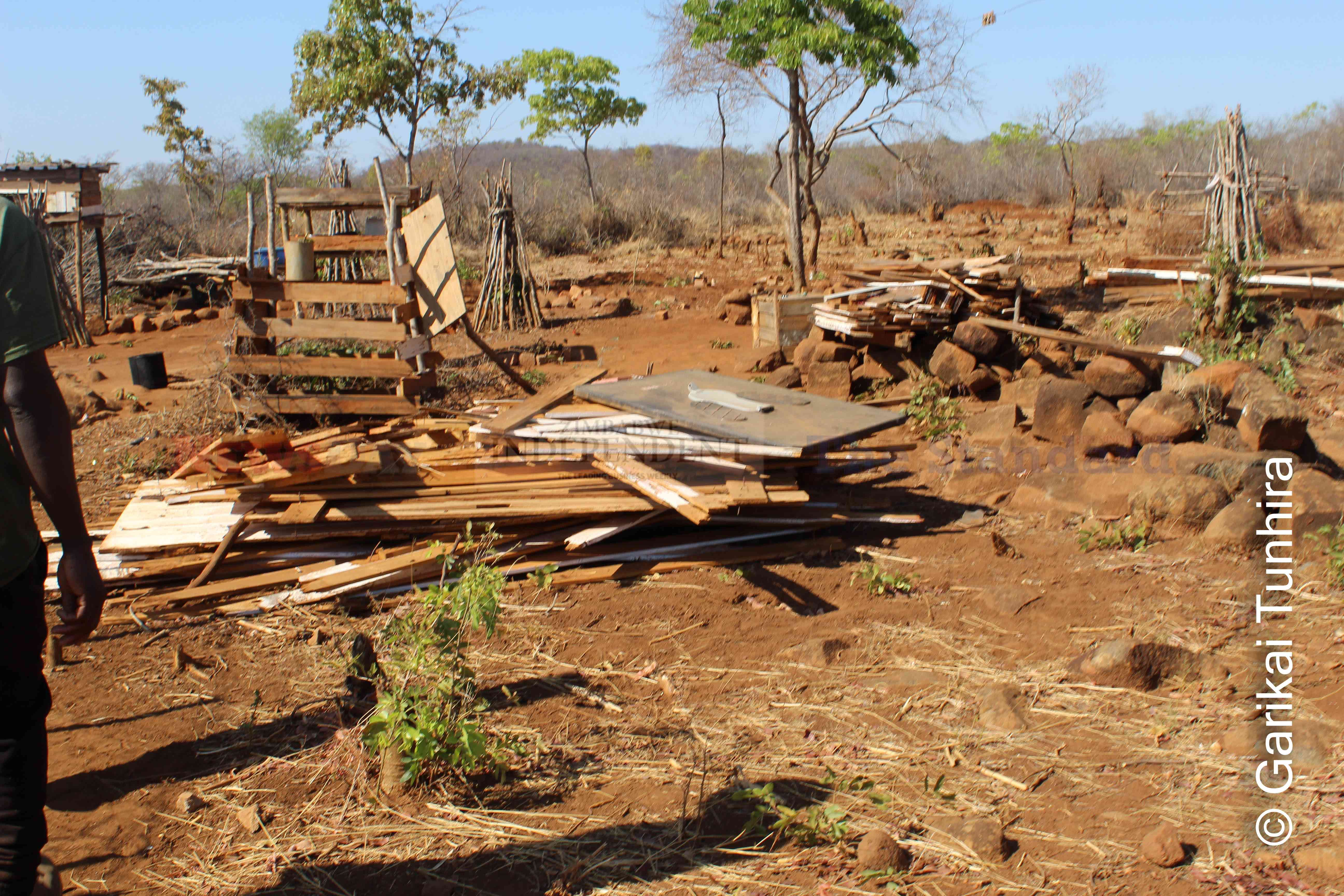
“There are no piece jobs here. Food is scarce here. On most days, we survive on manjoko [mangai/boiled maize kernels] and eat sadza in the evening because we do not have enough.
“Also, our places of residence are not suitable for human beings,” Dhliwayo said, as she was about to leave for a Food for Asset programme at Runyararo Clinic.
“The only good thing is that we are now fetching water near our houses.
“Previously we didn’t have nearby water sources, but a donor, WHH, drilled boreholes and brought water sources nearby. They also helped us to establish gardens.
“Now because it’s hot, we are not receiving as much water as we used to do. But we are grateful for that, helping us to grow vegetables. But the problem is we do not have starch.”
She said the food handouts they receive from the government were not enough.
“We do get it, but it’s not enough. Here we are seven, including my husband and our children,” the mother of five said, adding that her husband had gone out to look for menial jobs.
Dhliwayo said on school fees, she worries much about her children who are in secondary school, where she prioritises the payment of their fees.
“It gets very difficult because there are no piece jobs here. My children last drank tea last term.”
‘Gusty winds, dust, rains’
“I have a child we always keep indoors shielding them away from the gusty winds and dust,” said 45-year-old Precious Siyekhaya, or Mai Chokera.
“These cabins let in a lot of air and dust, which is not healthy for us.
“I came here during the second phase in 2022, but as you can see, my biggest worry is about the impending rainy season. I have a young family and I don’t know what to do when the rains come.”
She said after their arrival from Ngangu, they got cabins and a chicken-rearing project, as well as water which she uses to grow crops.
At her 50mx100m plot, she planted some wheat crop and sweet potatoes.
“Because of the drought, we get intermittent food assistance. We did not make it on the list of the Department of Social Welfare, but ZCC has come in to assist us through food for asset work. We are yet to get our first rations, where we anticipate to get a 50kg bag of mealie-meal, 4 litres cooking oil, between 5kg and 10kg beans.”
Siyekhaya said she had no hopes of having a house constructed for her, although the contractors only dug a foundation before leaving.
The housing programme was being spearheaded by the Local Government ministry, with July Moyo as the minister.
For now, Siyekhaya, her husband, their four children and two grandchildren have to fit in a two-roomed cabin.
Snakes, termites and fire ant menace
One corner of Praise Chipare’s cabin has been damaged by termites and she fears one day, her shelter will collapse.
“We have a huge challenge here of termites. You can come inside and take a look,” she said.
“I don’t know what to do now.
“It becomes worse in that we have a challenge of snakes that enter into our cabins. It’s hot these days and they move around. We have had many encounters of finding snakes in our cabins.”
Added Chipare: “There is also the challenge of fire ants [mhamhasi]. When it’s hot, they even come into our houses and we end up cramming on the bed, be it during the day or at night.
“When the kids are sleeping on the floor, we end up taking them and putting them on the bed.”
Menial jobs are not doing much for her, such that she has had to send her two children to stay with her mother.
The situation gets more difficult as it forced her to take care of her brother’s two children.
They have to scrap through on government food aid.
“The other time, we got 90kg sorghum. Last month, we got 90kg maize meal,” she said, adding that this is complemented by the US$80 on average a month her husband gets through carrying out menial jobs.
She had planted corn on a piece of her land, but the crop wilted as a result of the El Niño-induced drought.
Deserted cabins and houses
Many people are deserting their cabins, some going back to Ngangu or Rusitu.
A good number is going to stay at completed houses whose owners are yet to take occupancy.
Some of the boards have been stolen, others pulled down and used as construction material for chicken coops.
What is left are the concrete slabs and toilets.
The addresses number to a little over 800, but a count of rooftops using Google Maps shows around 160 built-up houses.
State-of-the-art Runyararo Health Centre
Previously, the Chayamiti community was heavily reliant on Chayamiti Rural Health Centre and Bumba Rural Health Centre, and for complicated medical cases, patients would be taken to Mutambara District Hospital or even Victoria Chitepo Provincial Hospital (formerly Mutare General Hospital).
But now, following the construction of Runyararo Health Centre, the health facility has become a saviour for many serving other communities like Bumba, Bvumbura, Shinja and Dokotoko.
Matron Susan Zuweni refused to comment on their operations at the facility, referring all questions to Chimanimani district medical officer Donatas Mugari, who at the time of going to print had not responded to NewsDay questions.
But indications are that the solar-power health centre is manned by 10 nurses, a number of nurse aids and two medical doctors.
When NewsDay visited the hospital last Monday, indications were that it had started operations a week after being opened by Vice-President Kembo Mohadi on behalf of President Emmerson Mnangagwa on June 13 this year.
New community, new school
Coming together with a new community, a new school, Runyararo Primary School was opened this year with an enrolment of 69 pupils and four teachers with composite classes.
“We have composite classes here. ECD A and B, Grade 1 and 2, Grade 3 and 4 as well as Grade 5 and 6. So we have four teachers here. We are looking at starting a Grade 7 class next year,” said head of station Godfrey Kwarire, who is the Grade 5 and 6 teacher.
“We opened the school on January 9 when the first term began. Most of our pupils here were coming from the mother school, Chayamiti Primary School.”
Kwarire said they faced a challenge of shortage of furniture.
“We have 60 desks and 60 chairs, but our enrolment is higher at 69. The other thing is that the furniture we have is suitable for Grade 2s and above. So for ECD A, ECD B and Grade 1 classes, we have a challenge,” he said.
“We also have a challenge of textbooks since it’s a new school. We have received some from a well-wisher, but we still don’t have others.
“Miracle Missions came to our help, they helped us with textbooks in other learning areas, but then we still want Shona, VPA, PE and ICT textbooks.”
On the feeding programme being carried out by government in schools, Kwarire said they had received word that they would be getting their share as well.
“We are yet to start getting our share, but we heard that it’s coming,” the head of station said.
“We also hope that we will get ICT equipment, computers and tablets so that out learners can have a hands-on approach.
Fees in a jobless community
Kwarire said they are facing challenges with fees payment.
“Many of the parents and guardians came from Rusitu and Ngangu and they have no source of income here, so it’s a huge challenge when it comes to payment of fees,” he said.
“Miracle Missions has also partly assisted in that area, they paid fees for 49 learners.
“The Basic Education Assistance Module is in the pipeline. What delayed the programme was that we had not yet opened a ZiG account with the banks. We only had a nostro account.
“So we should soon have some of the learners being beneficiaries.”
Human-wildlife conflicts
The school was built in an area heavily infested with baboons.
“We have a huge challenge of baboons here. This is a baboon area, so it poses a lot of challenges,” Kwarire said as he pleaded for assistance for fencing material as they want to set up a garden and orchard at the school.
“We are asking for assistance with fencing material. We want our learners to also have a hands-on approach and do practical’s in agriculture.
“So if we get enough fencing material to even fence the top of the garden, the better.”
NewsDay even witnessed a baboon snatching a chicken and running off with it, with one of the residents saying the previous day, the baboons had snatched another chicken at a neighbour’s place.
Some of the new villagers also keep goats.
“My goats go near people if they notice that some baboons are coming,” one of the new villagers said.
Lack of social amenities
Runyararo was built without the provision of social amenities like stores and other recreational facilities.
Villagers have to endure a 2km walk to access Chayamiti business centres or about 7km to Bumba business centre.
There are no roads to the newly-built houses and villagers have to use paths between houses.
NewsDay walked around the Runyararo area under the guide of one Ngoni, a villager from Chayamiti, who is well versed with the area, having worked under the Public Works ministry during the construction of houses.
Approximately 12km was covered during the walk around the area.



